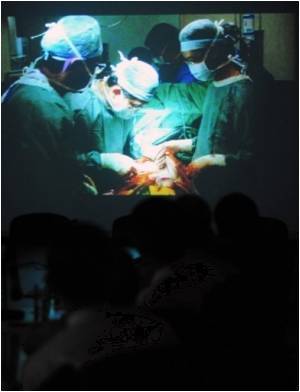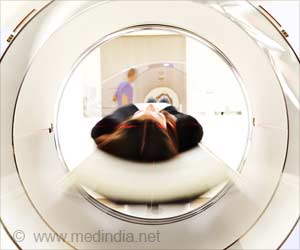According to a study the use of robotically-assisted hysterectomy for benign gynecologic disorders increased substantially.

The authors add that unlike other procedures such as prostatectomy for which robotic assistance is used more frequently than conventional laparoscopic approaches, laparoscopic hysterectomy is already widely available.
Jason D. Wright, M.D., of the Columbia University College of Physicians and Surgeons, New York, and colleagues examined the usage of robotic-assisted hysterectomy and assessed in-hospital outcomes and costs for robotically-assisted hysterectomy compared with laparoscopic and abdominal procedures. A total of 264,758 women were identified who underwent hysterectomy for benign gynecologic disorders at 441 hospitals across the United States from 2007 to 2010. The study group included 123,288 (46.6 percent) who underwent an abdominal hysterectomy, 54,912 (20.7 percent) who had a vaginal hysterectomy, 75,761 (28.6 percent) who had a laparoscopic procedure, and 10,797 (4.1 percent) who had a robotically-assisted hysterectomy.
The researchers found that robotically-assisted hysterectomy increased during the study period and accounted for 0.5 percent of the procedures in 2007 compared with 9.5 percent in 2010. The number of laparoscopic hysterectomies performed also increased; laparoscopic hysterectomy accounted for 24.3 percent of the procedures in the first quarter of 2007 compared with 30.5 percent in 2010.
After the introduction of robotically-assisted hysterectomy at a given hospital, use increased rapidly. "For example, at 3 years after the first robotic procedure in each hospital where robotics were used, robotic-assisted hysterectomy accounted for 22.4 percent of all hysterectomies. At these hospitals, use of vaginal, laparoscopic, and abdominal hysterectomy all declined," the authors write. "In contrast, at hospitals where robotically assisted hysterectomy was not performed, abdominal and vaginal hysterectomy declined, while use of laparoscopic hysterectomy increased."
Although patients who underwent a robotic-assisted hysterectomy were less likely to have a length of stay longer than 2 days (19.6 percent vs. 24.9 percent), overall complication rates were similar for robotic-assisted and laparoscopic hysterectomy (5.5 percent vs. 5.3 percent). Total costs associated with robotically assisted hysterectomy were $2,189 more per case than for laparoscopic hysterectomy, the researchers write.
Advertisement
"From a public health standpoint, defining subsets of patients with benign gynecologic disorders who derive benefit from robotic hysterectomy, reducing the cost of robotic instrumentation, and developing initiatives to promote laparoscopic hysterectomy are warranted," the authors conclude.
Advertisement















